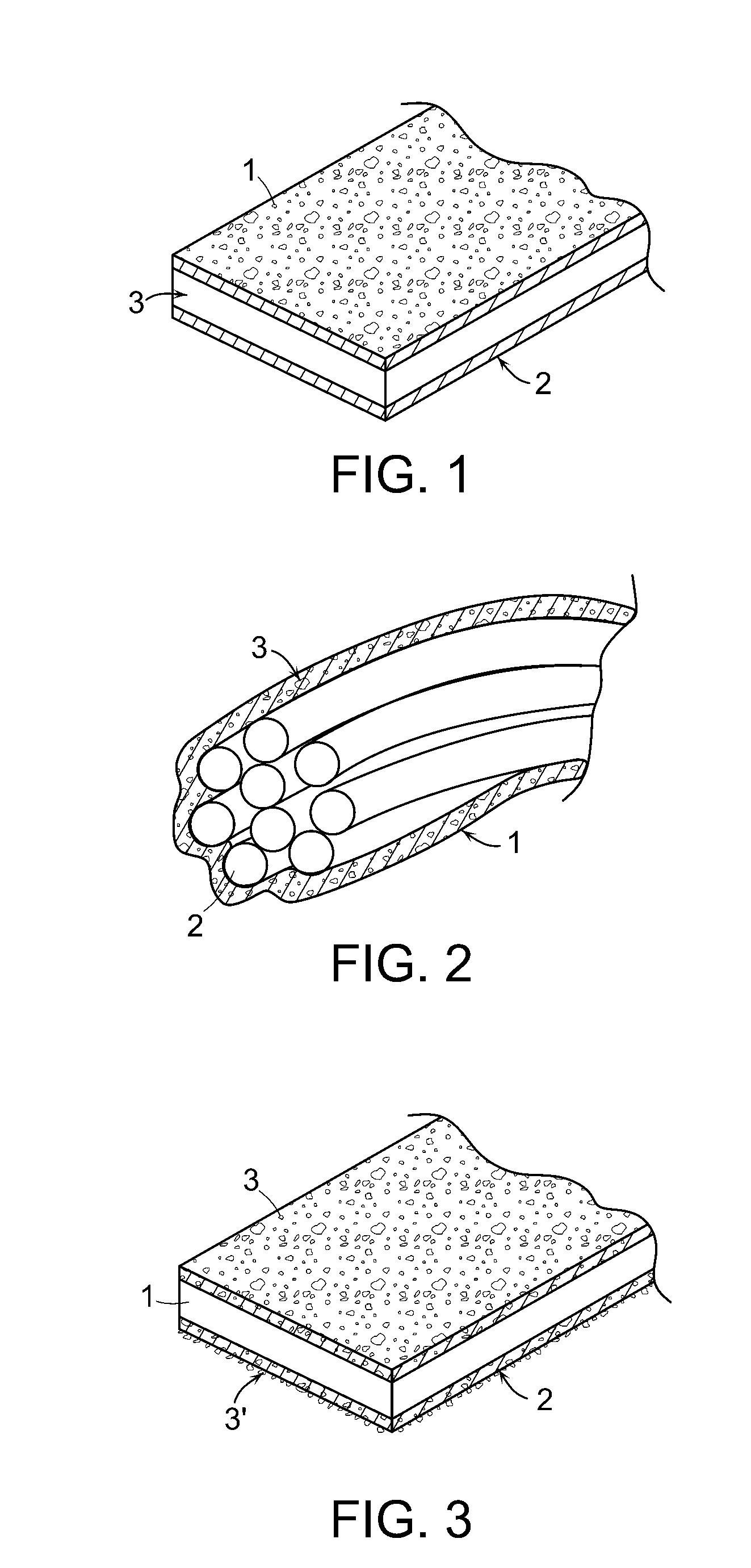Coated dental devices with ablative abrasives
a technology of ablative abrasives and dental devices, applied in dental floss, physical therapy, massage, etc., can solve the problems the most difficult to provide, and the effect of reducing the perception of flossing efficiency
- Summary
- Abstract
- Description
- Claims
- Application Information
AI Technical Summary
Benefits of technology
Problems solved by technology
Method used
Image
Examples
example 1
[0115]Ultrahigh molecular weight polyethylene (UHMWPE) tape of 1.1 mil thick and 62 mils wide was compression coated with a water soluble coating consisting of poloxamer 338, 44.7%; polydimethylsiloxane 2.5 million CS, 4.6%; propyl gallate, 0.1%; EDTA, 0.2%; flavor, 5.6%; dicalcium phosphate dihydrate, 6%, PEG 8000, 11.4%, Microcrystalline wax, 7%; stearyl alcohol, 15%; Pluracare L-1220, 3%, sodium saccharin, 2.4%. As the tape was coated with the molten formulation at 90° C. at a level of 67 mg / yd, a particulate overcoating of calcium sodium phosphosilicate, 70 micron average particle size, was applied according to the method of U.S. Pat. No. 7,017,591 to give 27 mg / yd of calcium sodium phosphosilicate. The dental tape thus produced exhibited a gritty, tactile perception while winding the tape on fingers followed by a gritty perception between the teeth when flossing. The crunchy perception in the mouth rapidly disappeared within 19 seconds as the overcoated abrasive broke down in r...
example 2
[0116]A dental tape composed of HDPE monofilament of 530 denier was compression coated with a saliva soluble coating consisting of poloxamer 338, 44.7%; polydimethylsiloxane 1000 CS, 4.6%; propyl gallate, 0.1%; EDTA, 0.2%; flavor, 5.6%; dicalcium phosphate dihydrate, 6%, PEG 8000, 11.4%, Microcrystalline wax, 7%; stearyl alcohol, 15%; Pluracare L-1220, 3%, sodium saccharin, 2.4%. As the tape was coated with the molten formulation at 90° C. at a level of 65 mg / yd, a particulate overcoating of calcium sodium phosphosilicate, 70 micron average particle size, was applied according to the method of U.S. Pat. No. 7,017,591 to give 14 mg / yd of calcium sodium phosphosilicate. The dental tape thus produced exhibited a gritty, tactile perception while winding the tape on fingers followed by a gritty perception between the teeth when flossing. The crunchy perception in the mouth rapidly disappeared within 17 seconds as the overcoated abrasive broke down in response to saliva.
example 3
[0117]A dental floss composed of 272 nylon 6,6 filaments of 840 denier was compression coated with a saliva soluble coating consisting of poloxamer 407, 42.6%; Dow Corning AF-1500, 10%; Carbowax 1450, 8.0%; Calcium Sodium phosphosilicate, 26.6%; propyl gallate, 0.1%; flavor, 6.4%; silica, 4%, sodium saccharin, 2.3%. The floss was coated with the molten formulation at 90° C. at a level of 91 mg / yd. The dental floss thus produced exhibited a gritty, tactile perception while winding the floss on fingers followed by a gritty perception between the teeth when flossing. The crunchy perception in the mouth disappeared within 20 seconds as the abrasive in the coating broke down in response to saliva.
PUM
 Login to View More
Login to View More Abstract
Description
Claims
Application Information
 Login to View More
Login to View More - R&D
- Intellectual Property
- Life Sciences
- Materials
- Tech Scout
- Unparalleled Data Quality
- Higher Quality Content
- 60% Fewer Hallucinations
Browse by: Latest US Patents, China's latest patents, Technical Efficacy Thesaurus, Application Domain, Technology Topic, Popular Technical Reports.
© 2025 PatSnap. All rights reserved.Legal|Privacy policy|Modern Slavery Act Transparency Statement|Sitemap|About US| Contact US: help@patsnap.com


